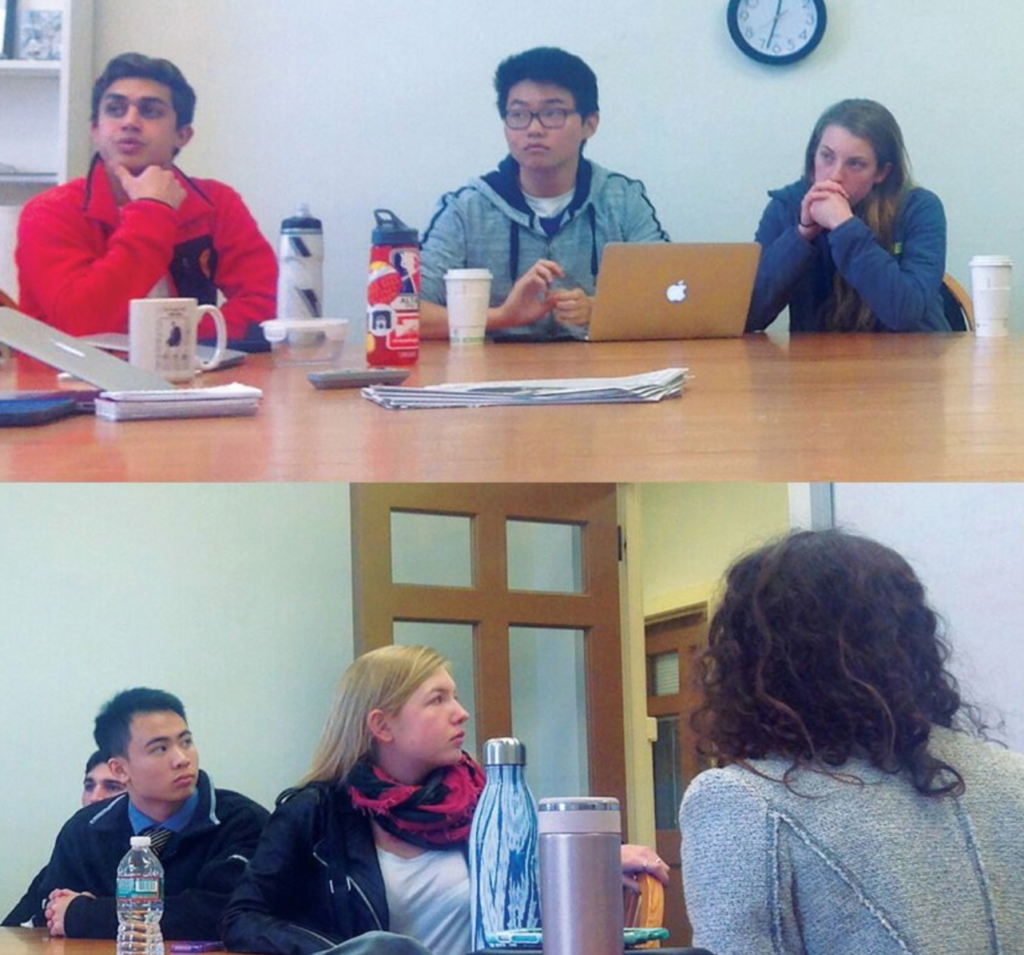At an academically competitive institution like Choate, the pressure to excel often drives students to work hard and obtain the highest grades in all classes. However, while all course grades are recorded on transcripts using a traditional letter system, a vast array of grading systems are present within different classes. Courses such as Mr. Nick Molnar’s AB Calculus, Mr. Molnar and Mr. Mike Peed’s Journalism and Nonfiction Storytelling, and Mr. Joe Scanio’s Ecology taught at the Kohler Environmental Center (KEC) diverge from the standard grading system.
Mr. Molnar does not only omit letter and numerical grades on papers, but also on quizzes and tests. In terms of his reasoning behind implementing a non-traditional grading system, Mr. Molnar explained, “There’s a lot of research that suggest that students best respond to feedback. Feedback can be given in three different types: with a grade only, a grade and comments, or comments only.” He explained, “I think the focus becomes much less about doing work for a grade or trying to focus on what is going to be on a test or an assessment than actually understanding and learning things.”
Mr. Molnar noted, “It is not that we do not grade. A lot of students believe that I don’t grade, but I am always assessing students and grading.” He said, “Every single problem I assign, I know exactly what it is assessing, and then I grade on a one-to-four scale. One basically means there is very little evidence of your understanding, two is building understanding, three means there are still some minor errors, and four is that they mastered it.”
Regarding his AB Calculus class, he said, “I am of a strong opinion that students should be given an opportunity to show that they can master a concept by the end of the term when I have to give them a final grade. It seems to be a good incentive for them to continue to work on something they did not understand earlier in the term, particularly in a course where we don’t have many final exams. I assign students hard problems, but I believe that students can understand these hard problems if they work at them. I am not going to give them the answer just because they didn’t get it correct, but they have to work to find the answer and they have to prove it to themselves that they can understand and do all of these problems.”
Ryan Kish ’17, who had Mr. Molnar for AB Calculus and currently has him and Mr. Peed for Journalism, explained, “Mr. Molnar never gave tests — we had one test the whole year, and it was an AP practice exam. Instead, we typically had take home problem sets that we did revisions on — he was really grading on your effort and curiosity.”
Mr. Molnar said of these problem sets, “Students can always submit their revision until they master it. Basically, I accept revision until the term is out.”
Mr. Scanio’s Ecology class also deviates from the normal testing conditions at Choate. He said, “I design tests to cover the most amount of material and still challenge the students — it’s impossible for students to get one hundred percent, because students are all being challenged.” For these types of tests, students would have to look up the data, analyze it, and interpret their results in a limited amount of time. He notes, “I think these are the skills that will be needed for people in the real world.”
Students from classes with non-traditional grading systems have shared varying opinions. Kish said, “Any student who puts in the work is going to get a lot out of the class. Mr. Molnar’s whole teaching system, which includes his grading system, really helped me think deeply about the material and less so about grades.” He continued, “The environment is much less about getting something right, but thinking about why it is right, which is so much more interesting.”
Arin Kaye ’17 said, “I think that it’s productive in that we get comments and feedback.” She added, “The challenge that we come to with a course like Journalism is that grading can be very subjective. If there had been a letter grade, and I had written something about my personal life, then I might disagree with the grade I received. I think that this non-traditional grading system fits well with the structure of the Journalism course.” Kaye noted that she believes in “learning for the sake of learning,” and believes that this mindset, compared with that of a more grade-centered mindset, contributes to her view of the non-traditional grading system.
Some students, however, expressed dismay at the different grading system. Contrasting with Kish and Kaye, Joyce Tan ’17 described elevated levels of stress regarding grades in her journalism class: “We never get tested, and this makes me worry more about grades because I have no idea where I am.” Before midterms and the end of the term, Mr. Molnar and Mr. Peed asks students to reflect on their performance to help determine their final grade. However, Tan noted, “I went to extra help every week, hoping to get a better a grade. But at the end, they gave me the same grade, despite my efforts and the work I put in. I don’t think they take our reflection into account because they give you grades based off of where they think you stand.”
Kish said, “I do wish that there was some way of knowing how well I was doing in the class outside of midterm and term grades.” Danielle Young ’17 commented, “I don’t know how supportive this system is for students who come from variety of backgrounds, as many students may not be used to not receiving a letter grade.”
On the note of how these non-traditional grading systems are indicative of a greater long-term trend, Mr. Scanio said, “I think Choate in general is moving towards a lot of things that are more project based — more collaboration, more critical thinking, and skills-driven education. I think in general, that is a good thing.”



